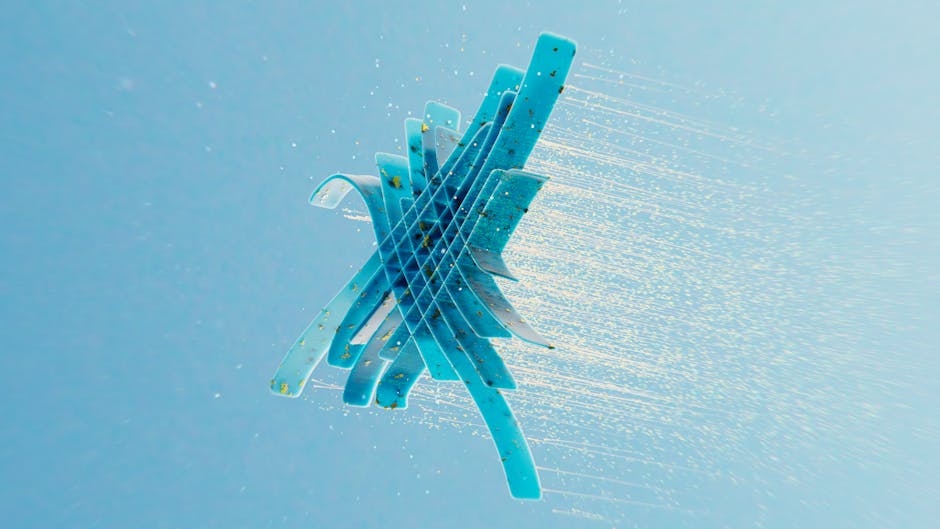Who Owns AI-Generated Art? Explore the Legal Grey Areas Today!
In a world increasingly infused with artificial intelligence (AI), the question of who holds the rights to art created by machines is fast becoming one of the most pressing legal issues of our time. "Navigating the Legal Grey Area of AI-Generated Art: Who Really Owns the Rights?" unravels the complexities of copyright law, artist rights, and the role of technology in creativity. If you're an artist, a tech enthusiast, or someone simply intrigued by the intersection of law and innovation, this exploration is designed to guide you through the many layers of this evolving landscape.
The Rise of AI-Generated Art: A New Frontier
The advent of AI-generated art marks a significant shift in the creative industry. From stunning digital paintings produced by algorithms to music crafted through machine learning, AI continues to break traditional boundaries, leaving both creators and legal experts grappling with the implications. As AI technology advances, the capacity for machines to autonomously create pieces that can mimic and even surpass human artists becomes vividly apparent. However, this raises critical questions: Who is responsible for the artwork? Can it be copyrighted? And what does the future hold for creators in this digital age?
The emergence of AI art has created not just excitement but a flood of legal conundrums. The U.S. Copyright Office recently addressed these concerns, emphasizing that while AI can produce art, it does not possess the same legal rights as a human creator. This distinction fosters a multitude of discussions around ownership. The current laws are struggling to keep up with technological advancements, presenting us with a compelling legal grey area.
Understanding Copyright Law in a New Light
Copyright law has long been established to protect the rights of creators. However, the notion of an AI being a creator challenges the very foundation of copyright principles. According to the U.S. Copyright Office, works need a human author to qualify for copyright protection. This means that while an AI tool can aid artists in their creation process, it cannot independently claim ownership of what it produces.
The implications of this are vast. For instance, if an artist uses AI to create a unique work, does the ownership revert solely to the person operating the AI, or does it also incorporate the AI's underlying algorithms and data? As you navigate this murky terrain, it’s critically important to be aware of potential loopholes that could impact your rights to AI-generated work, similar to those discussed in our post on legal loopholes in augmented reality.
Distinctions Between Human and Machine Creativity

When we consider the nature of creativity, we need to look at the fundamental differences between human and machine-generated artwork. Human creativity often stems from emotion, experience, and consciousness—factors that AI cannot replicate authentically. While an AI can generate visually appealing works based on patterns and data analysis, it still lacks the personal touch and intention behind the creation.
This leads us to consider moral rights—the rights of creators to their art. In many jurisdictions, moral rights protect an artist's personal connection to their work, whether it's a canvas painting or a digital output. Because an AI lacks emotions and experiences, it cannot possess moral rights over created pieces. Thus, the discussion not only revolves around who owns the output but also considers the integrity of the work created in AI systems.
Potential Pathways to Legal Ownership

As of now, the ownership of AI-generated works is uncertain, but some potential pathways have emerged. The first scenario involves the original creator—be it an artist or programmer—taking ownership of the artwork produced by the AI. However, compensation and contractual agreements become essential here, varying greatly based on how the AI tool is used and the scope of its capabilities.
Alternatively, there’s a notion gaining traction about AI-generated works existing in a public domain. This opens the floor to discussions on democratizing these creations, allowing more extensive access without concern for legal ramifications tied to copyright infringement. Regardless, it complicates the legality of the creator's claim, putting many artists in a precarious position.
The Role of Contracts and Agreements

Given the uncertainties, having well-drafted contracts is vital for anyone utilizing AI as a tool for creation. Contracts can delineate rights and expectations between artists and software developers or providers, ensuring that the roles of both human and machine components are clear. This concept parallels our exploration into governing smart contracts, which provide a technical solution to legal agreements in the digital space.
By working collaboratively with legal teams to draft robust agreements, artists can better protect their rights, express ownership, and potentially navigate future negotiations regarding their AI-generated works. It’s crucial not only to define the ownership of the final output but also to address how this art will be marketed, shared, or sold.
The Global Perspective on AI Art Ownership

The legal landscape surrounding AI-generated art is not uniform; it varies drastically from one jurisdiction to another. Countries like the United States and the European Union are grappling with how to adapt existing laws to manage this burgeoning wave of technology effectively.
In Europe, proposals are being made for new regulations that could grant specific rights to both creators and the AI systems themselves. For instance, under EU copyright directives, a distinct adaptation of moral rights could provide a framework wherein AI becomes partially acknowledged for its contributions, albeit still underscoring the human factor as the primary author.
This ongoing legal evolution presents opportunities and challenges, emphasizing the need for artists and developers alike to stay informed on international developments. As we navigate this changing territory, it's important to engage with resources like Harvard Business Review to keep track of innovative legal frameworks and emerging best practices.
Future Implications: The Ethical Dimension

Amid these legal questions, ethical considerations also emerge regarding the use of AI in creative fields. Some artists express concern about whether AI-generated works devalue human creativity, ultimately challenging the principle of artistic authenticity. If machines can create art that rivals human efforts, where does that leave the traditional artist?
This ethical dilemma extends beyond copyright—a continuous conversation that touches on cultural appropriation, labor rights, and economic factors. Our upcoming post on the future of AI witnesses opens fresh dialogue on how AI intersects with various fields, including legal ethics, further emphasizing the complexities of these discussions.
Navigating AI Copyright and Ownership Today

As an artist grappling with the implications of AI in your creative process, certain proactive steps can set you on the right path. First and foremost, familiarize yourself with existing copyright laws and explore how they intersect with AI usage. Consulting with legal experts specializing in intellectual property law can provide you with tailored advice relevant to your unique situation.
Next, consider clearly documenting your creative process when integrating AI into your work. Keeping records helps establish a timeline of your artistic endeavors, which can serve as vital evidence of ownership. Finally, continually engage with current debates, new laws, and case studies as they develop. Being informed will empower you to advocate for your rights effectively.
Final Thoughts: The Future of AI-Generated Art
As we look towards the future, navigating the legal grey area of AI-generated art presents both challenges and opportunities for artists and creators alike. The dialogue surrounding ownership, copyright, and usage rights is ongoing and essential as technology evolves. While no definitive answers exist yet, one thing is clear: Awareness, engagement, and legal preparedness are paramount in this rapidly changing landscape.
Creativity in the digital realm will continue to flourish, but safeguarding your creations will hinge on understanding the foundational legal principles that guide it. In this exciting era where art and technology intersect, you have the power to take charge of your artistic journey and carve out your space within this new, legally complex domain.
For those interested in expanding their knowledge further, consider reading about the legal landscape of AI-generated art and staying updated with upcoming guidelines and resources on intellectual property.





